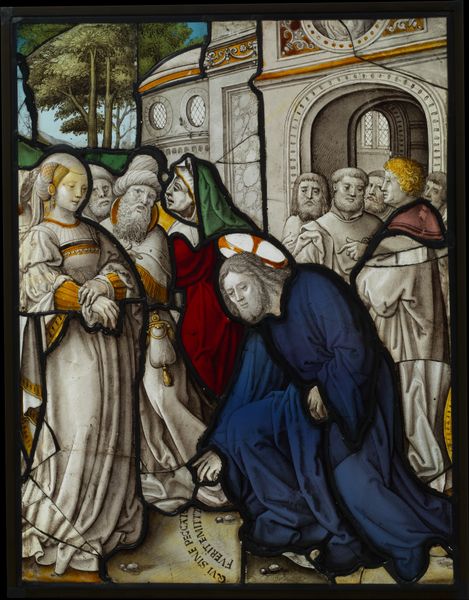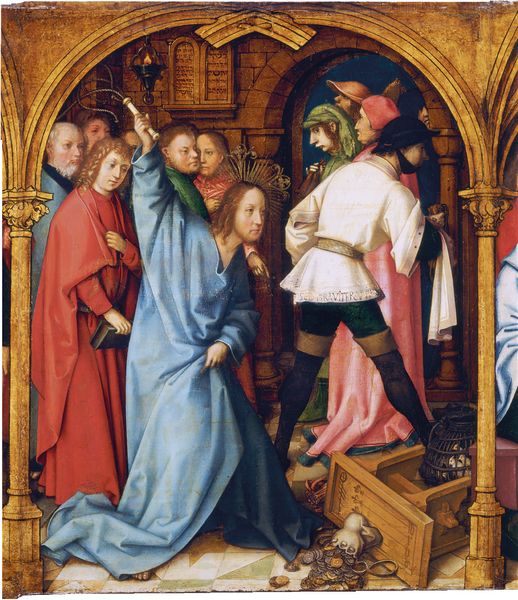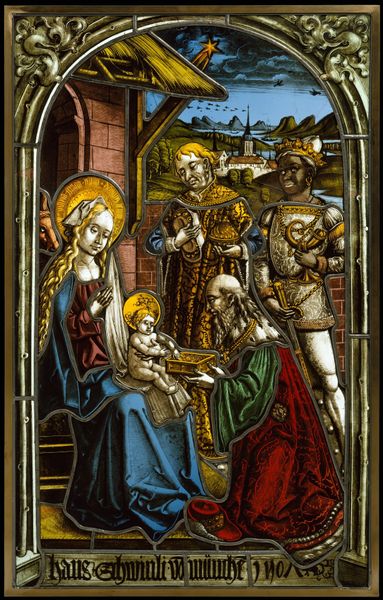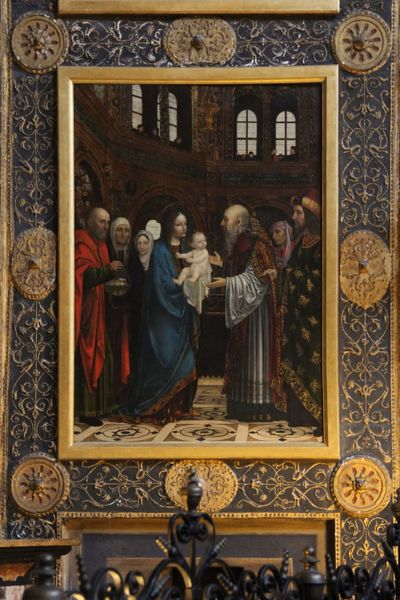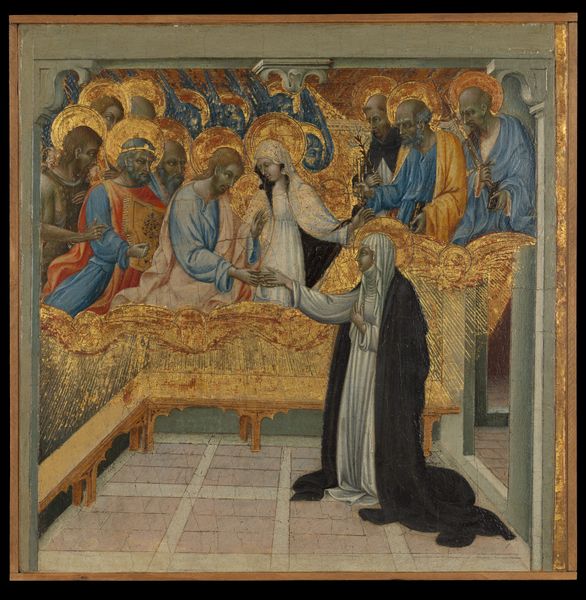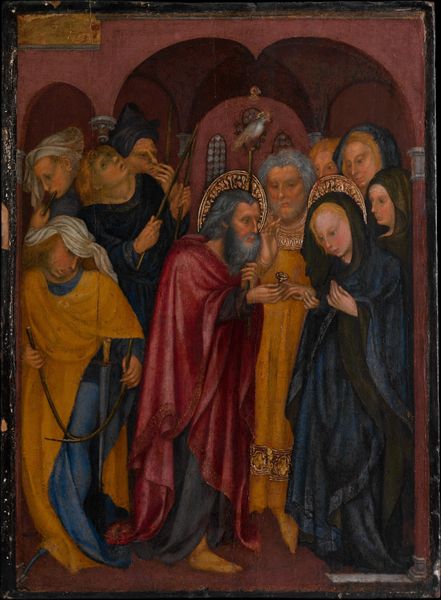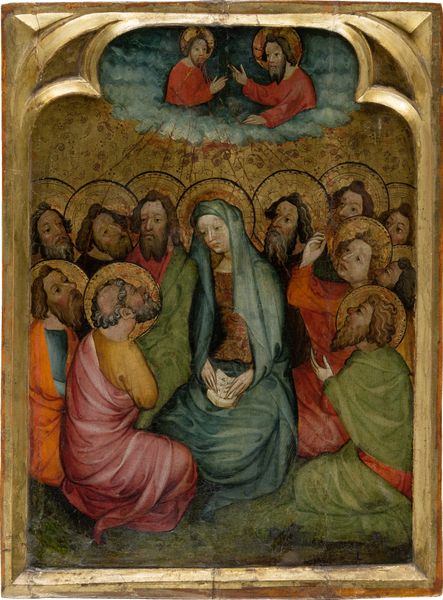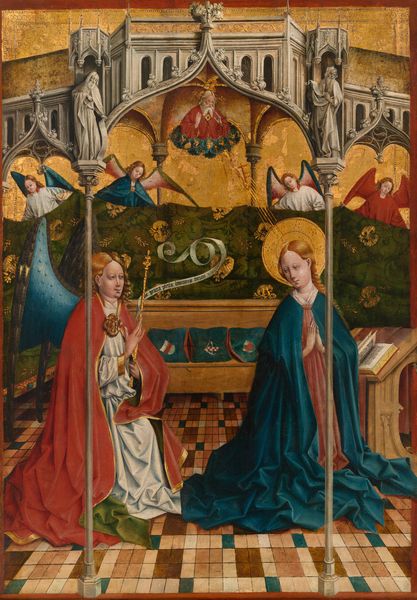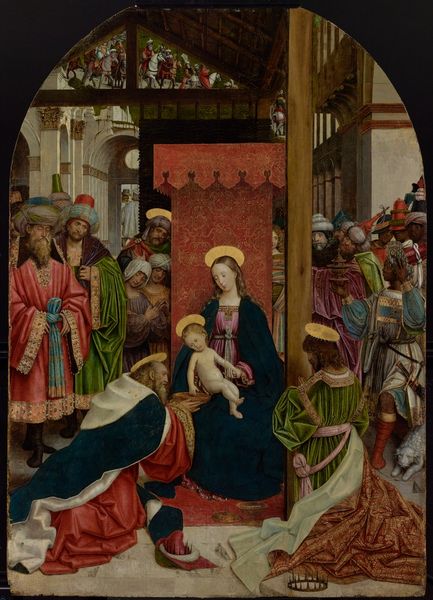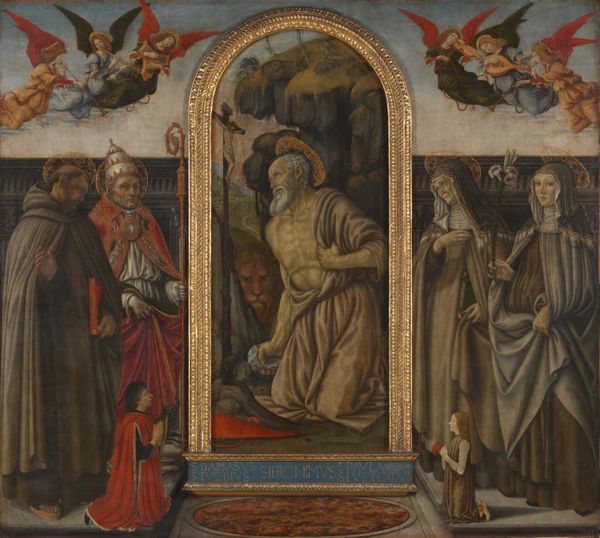
Healing of the Paralytic at Capernaum (one of a set of 12 scenes from The Life of Christ) 1520 - 1535
0:00
0:00
glass, sculpture
#
medieval
#
narrative-art
#
figuration
#
glass
#
sculpture
#
men
#
history-painting
#
christ
Dimensions: Overall: 26 × 19 3/8 in. (66 × 49.2 cm); Framed (confirmed): 22 7/8 × 17 3/4 × 3/8 in. (58.1 × 45.1 × 0.9 cm)
Copyright: Public Domain
Editor: This stained-glass panel, “Healing of the Paralytic at Capernaum” by Jan Rombouts, made sometime between 1520 and 1535, really strikes me. The composition is fascinating with the dramatic staging. What is your interpretation of its historical context? Curator: This panel is one of twelve depicting the life of Christ, and was probably originally part of a larger church or chapel window. Given its context, we can explore the politics of imagery during the Reformation. The detailed depiction of the biblical narrative suggests an intent to communicate scripture visually to a broad audience. Editor: How does its function impact its artistic style? Curator: Its location matters enormously. It's not just art for art's sake, it's deeply embedded in the visual culture of religious life. The dynamism of the scene is remarkable considering the medium, isn’t it? How do you see that playing out in relation to the period? Editor: It's almost theatrical! The way they lowered the paralyzed man through the roof… It adds to the story's drama. Curator: Exactly! And who has access to it? The church is central to public life in the community. It mediates divine power and transmits a specific reading of biblical stories that support a hierarchical structure. So, the act of viewing it is also an act of acknowledging this social and spiritual hierarchy. Do you notice any indicators about social classes portrayed? Editor: Well, the people assisting the paralytic seem lower class; Christ is, as always, set apart and holy. The people interacting with Christ wear fancy garments. Curator: The robes symbolize something greater. But do you think a message to “heal the sick,” may transcend some class differences? Editor: Perhaps, especially to encourage everyone to support social mobility, regardless of wealth or power? Thanks! That helped clarify the purpose and social context quite a bit. Curator: You're welcome. Considering art's public role truly deepens our understanding of its importance and intention!
Comments
No comments
Be the first to comment and join the conversation on the ultimate creative platform.
